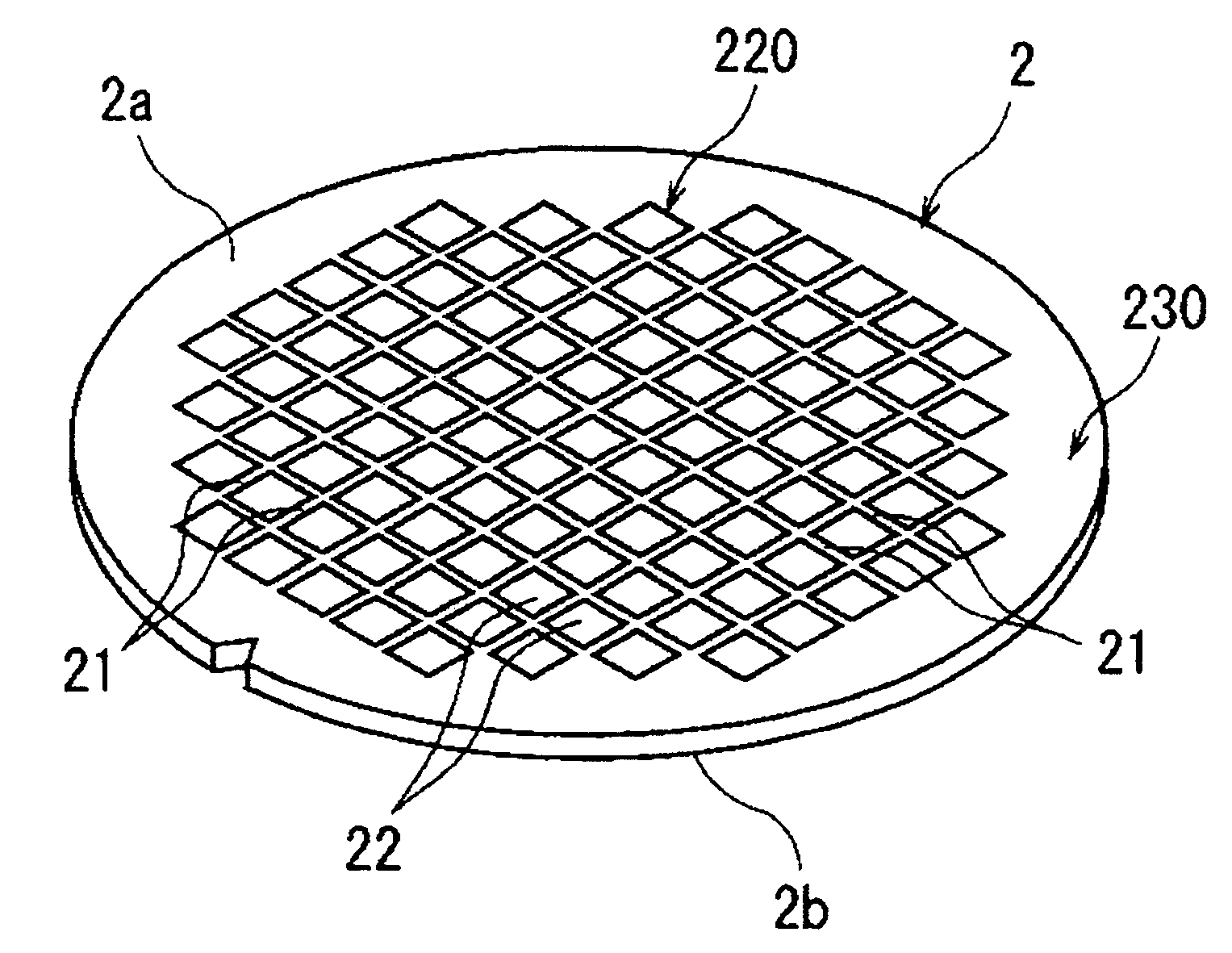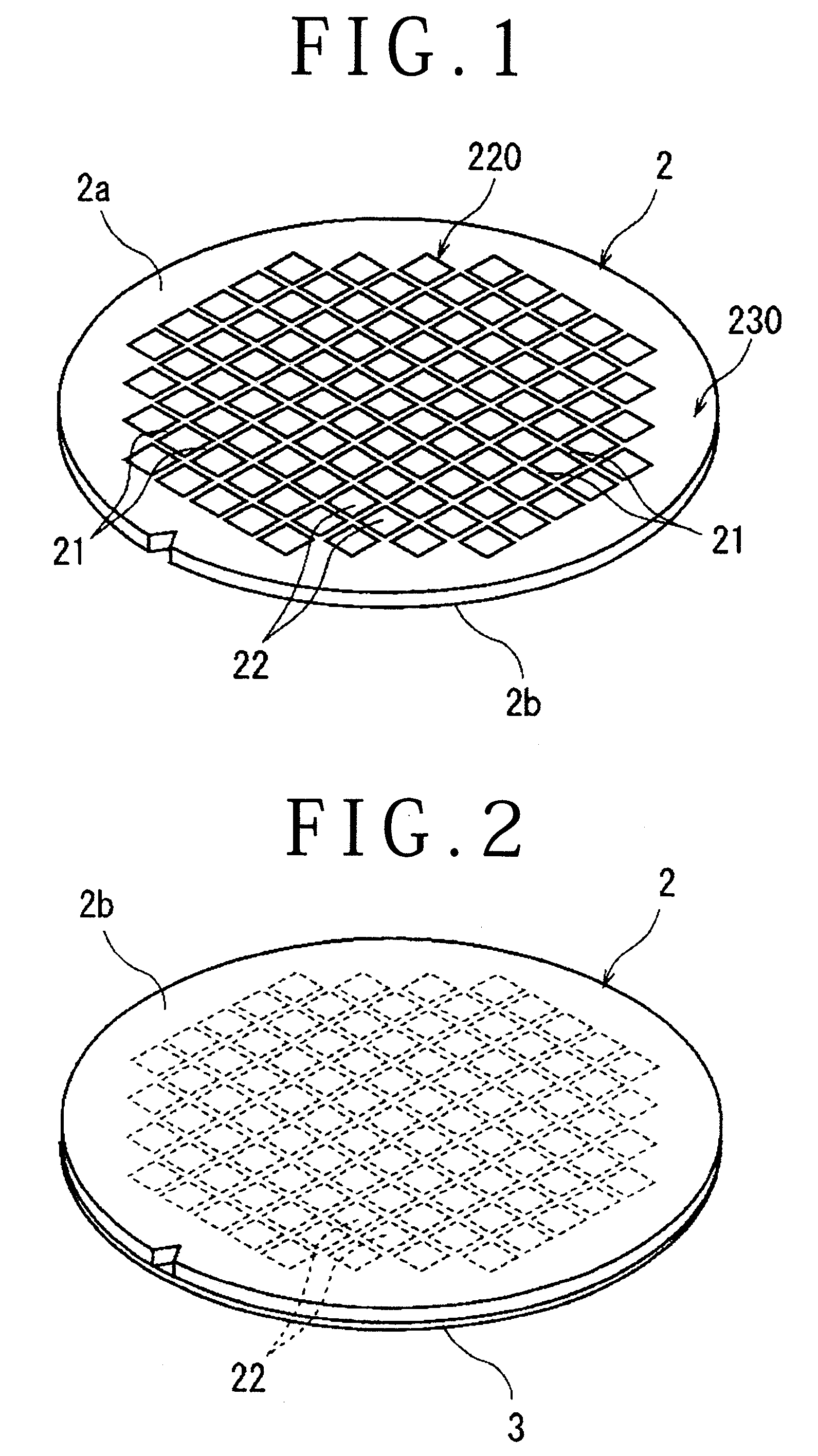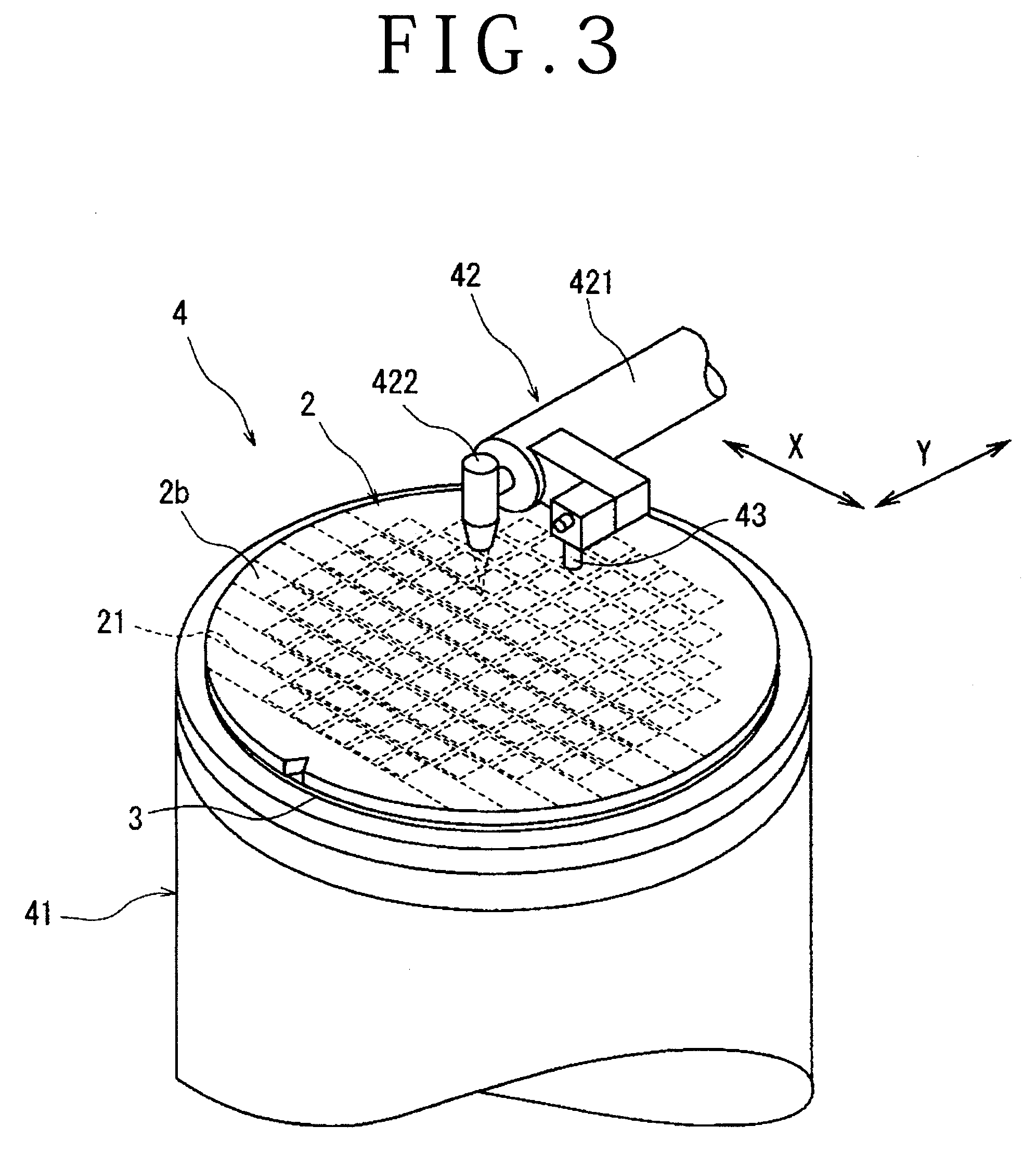Wafer dividing method
a dividing method and wafer technology, applied in the field of wafer dividing method, can solve the problems of difficult laser beam focus adjustment, wafer may crack along the modifying layer, and warp at the outer circumference, and achieve the effect of small thickness
- Summary
- Abstract
- Description
- Claims
- Application Information
AI Technical Summary
Benefits of technology
Problems solved by technology
Method used
Image
Examples
first embodiment
[0029]A first embodiment in which the semiconductor wafer 2 is divided along the streets 21 into the individual devices is described with reference to FIGS. 2 through 13B. When the semiconductor wafer 2 is divided along the streets 21 into the individual devices, a protection member 3 is stuck to the front surface 2a of the semiconductor wafer 2 as shown in FIG. 2 (a protection member sticking step). Thus, the rear surface 2b of the semiconductor wafer 2 is exposed.
[0030]After the execution of the protection member sticking step, a modifying layer forming step is performed. In this step, a laser beam with a wavelength that can pass through the semiconductor wafer 2 is focused on the inside of the semiconductor wafer 2 from the rear surface 2b thereof and applied thereto along the street 21. This application forms a modifying layer having a thickness from the front surface 2a of the semiconductor wafer 2 corresponding to at least the finishing thickness of the device 22. This modifyi...
second embodiment
[0058]In this case, it is enough that a laser beam irradiation range is the device area 220 of the semiconductor wafer 2, that is, a laser beam is not applied to the outer circumferential redundant area 230 formed with the annular reinforcing section 230b. As described above, the modifying layer forming step in the second embodiment is executed after the portion of the rear surface of the semiconductor wafer 2 corresponding to the device area 220 is ground and formed to have the finishing thickness (e.g. 50 μm) of the device 22. However, the annular reinforcing section 230b is formed at the area of the semiconductor wafer 2 corresponding to the outer circumferential redundant area surrounding the device area 220. Thus, the semiconductor wafer 2 causes no warps at the outer circumference thereof. Consequently, the modifying layer forming step can surely form the modifying layers 210 at respective predetermined internal positions of the semiconductor wafer 2 so as to extend along the ...
PUM
 Login to View More
Login to View More Abstract
Description
Claims
Application Information
 Login to View More
Login to View More - R&D
- Intellectual Property
- Life Sciences
- Materials
- Tech Scout
- Unparalleled Data Quality
- Higher Quality Content
- 60% Fewer Hallucinations
Browse by: Latest US Patents, China's latest patents, Technical Efficacy Thesaurus, Application Domain, Technology Topic, Popular Technical Reports.
© 2025 PatSnap. All rights reserved.Legal|Privacy policy|Modern Slavery Act Transparency Statement|Sitemap|About US| Contact US: help@patsnap.com



